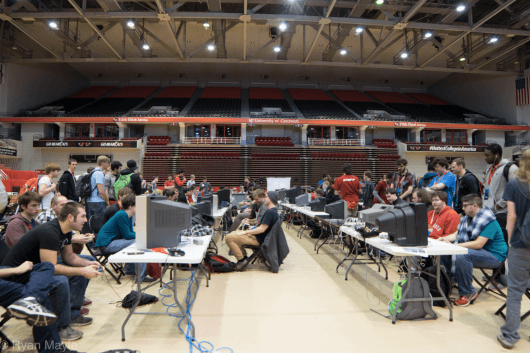With the flourishing of the esports industry, Ohio State announced a full-scale esports program on Wednesday that will thread together game study curriculums, collegiate competitions and medical research of esports athletes.
Brandon Smith, the esports director at The Office of Student Life, said the esports teams at Ohio State drew more attention and university support after a good track record at the Big Ten Tournament.
“Our program is going to be stronger connected to research and things that were already happening,” Smith said. “It provides students leadership opportunities and gets into some of the careers in esports.”
The heart of this program will fall under the popularization of esports curriculums — open to students from all majors — ranging from game studies and design to elective and online courses for obtaining certificates.
“With the uncertainty of pathways, as a business student, I have access to a program like esports development program or a game business management program, which would be an incredible opportunity for me,” said Christian Hunt, a third-year in accounting and the treasurer of The eSports Initiative, a student-run esports organization.
Additionally, the program allocates funding on the construction of an esports arena, which will provide students with 80 seats, well-equipped computers and a broadcasting room.
Smith said it is necessary for competitors to practice and discuss game strategies on the same page.
“I think the program takes a lot of financial investment to build the esports arena on campus and it’s going to super huge in terms of having a physical goal,” Hunt said.
Other than efforts on academic support and building a full-featured gaming environment, the program also conducts a variety of brainwave tests on high-skilled esports players.
“The medical research could get back into the just raw performance of our teams,” Hunt said. “By testing, we could know how we can change coaches on practice and how players stick it out relative to the traditional sports athletes.”
However, Smith said the performance study will not get started with the esports performance itself. Instead, the research will begin with studying video game players’ brain activities and physical traits.
“As we get started, the teams that are working on the research will be coordinating and collaborating with us,” Smith said. “Any of the results will present funding that any student could benefit from.”
James Onate, director of the Sports Medicine Movement Analysis and Performance Program at Ohio State Wexner Medical Center, said their team’s task is to figure out what markers lead to the good performance of esports athletes and how to optimize individuals’ daily behaviors.
Hunt said ESI might take advantage of this resource, since it helps understand “what the mechanical aspects of esports are.”
Despite the announcement, the program is still in its beginning stages and Hunt said it takes time to put the blueprint into practice.
“You can’t just build up traditional sports programs, which would take a couple of years, not even considering sports management and all the things that have concrete examples. It’s going to take some time,” Hunt said. “I think in terms of making an initial framework, it actually is fair and comprehensive.”
For now, curriculums and medical baselines have gone toward the end of the design phases, Smith said. Over the next few months, the university is going to update the progress of the program.



